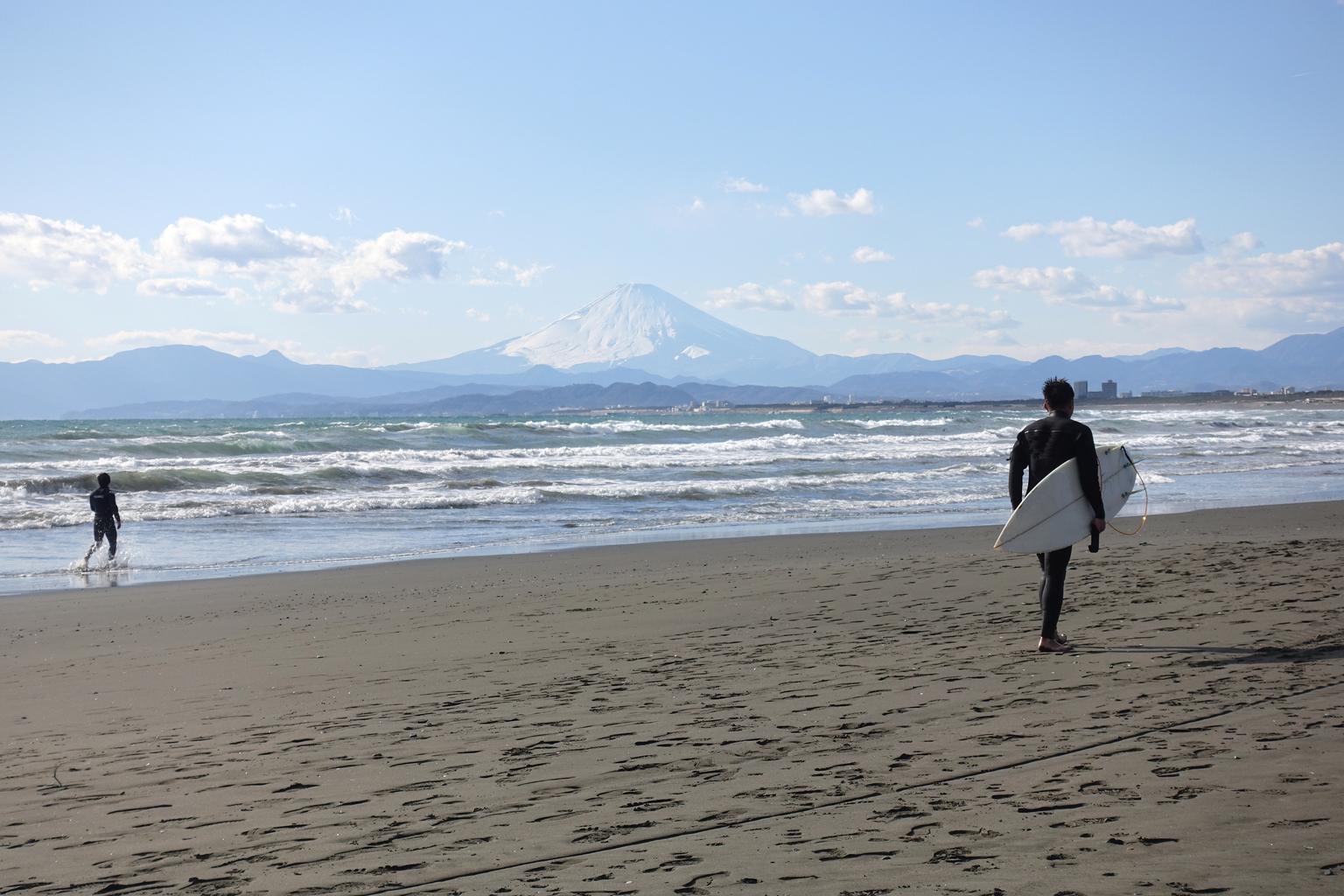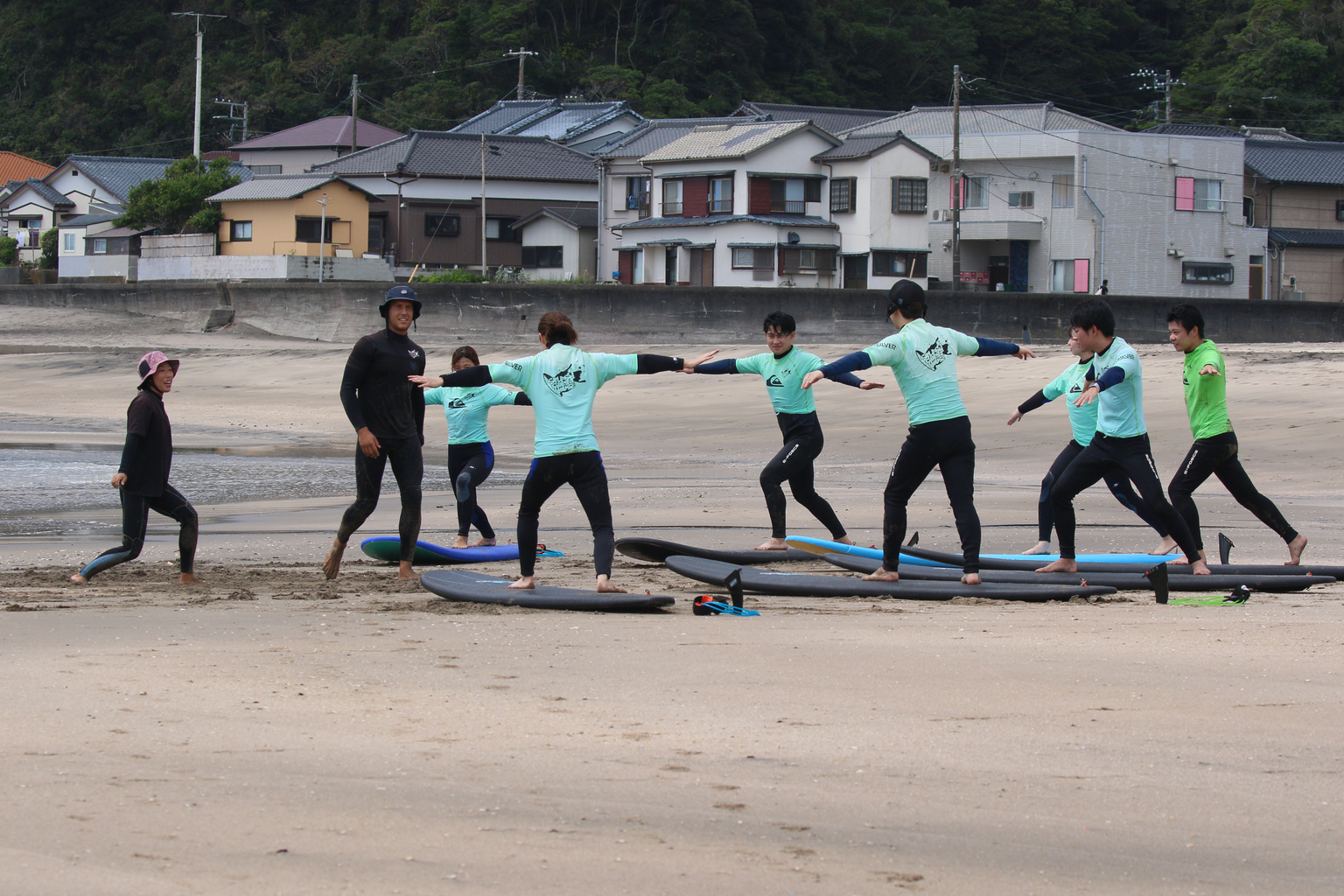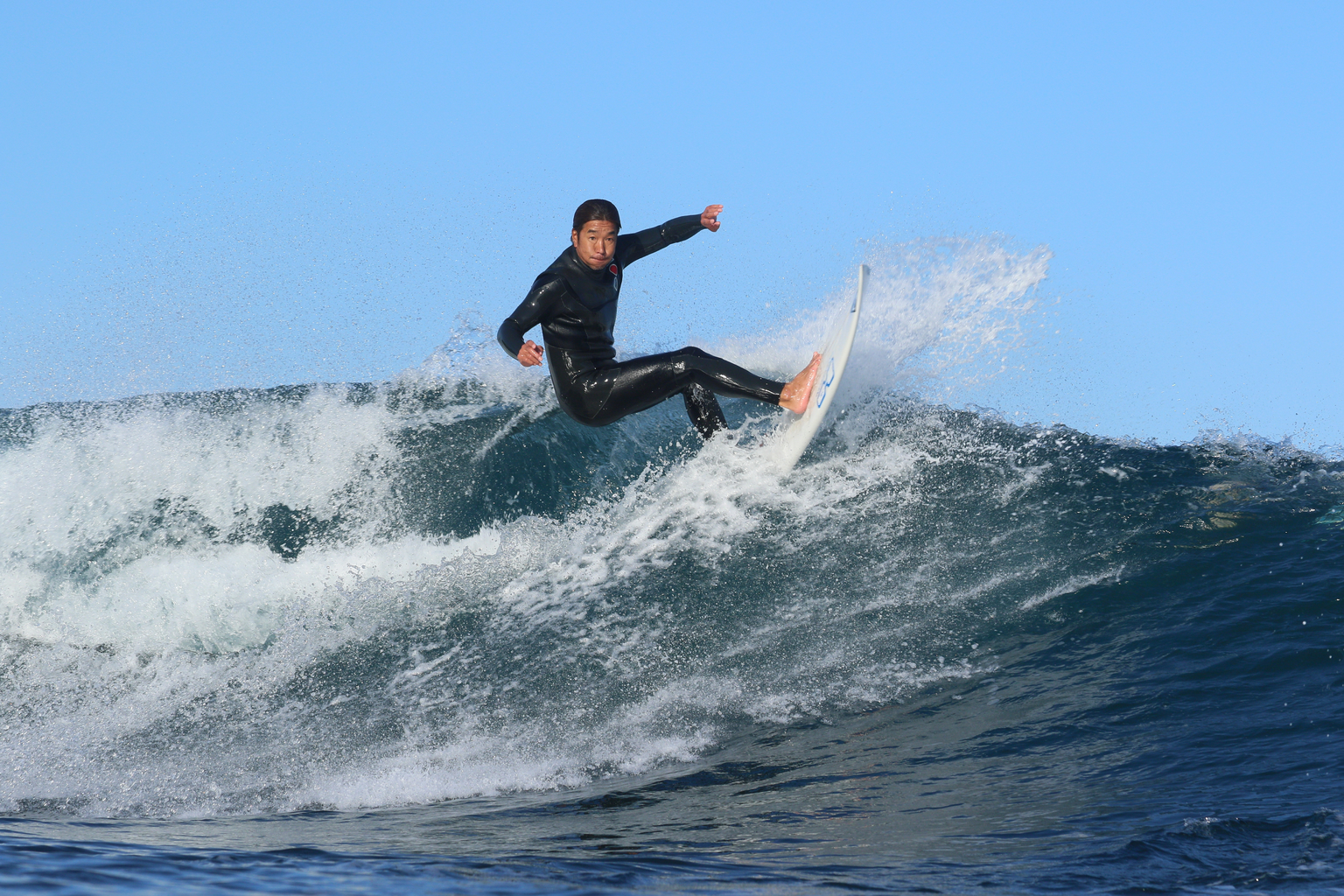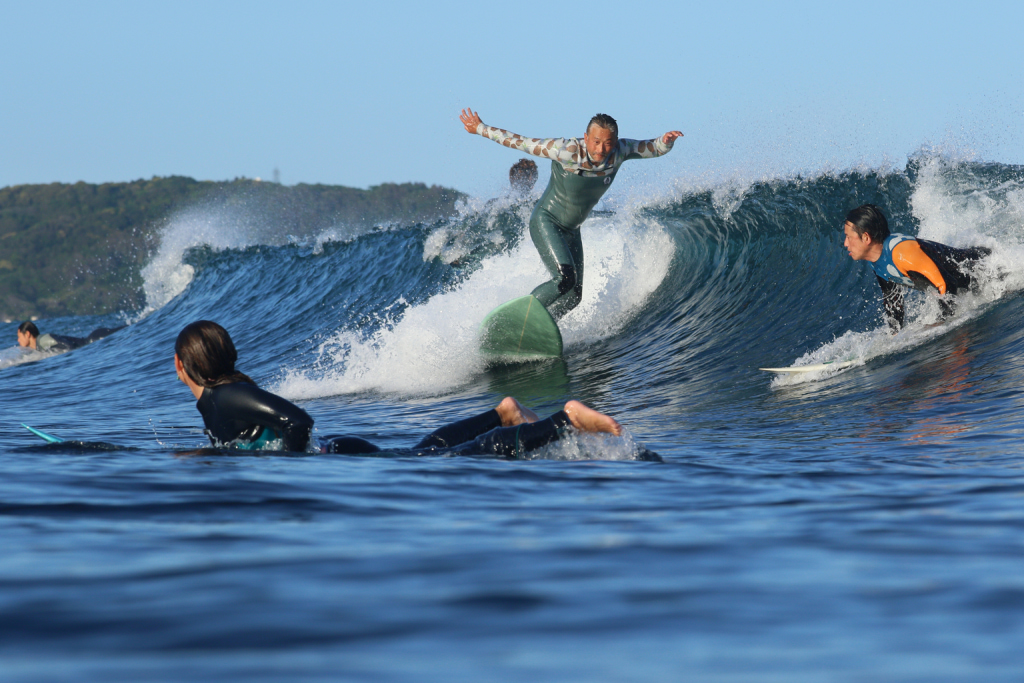When it comes to surfing, Japan usually isn’t the first country that people imagine. However, it was where surfing was introduced as a sport at the Tokyo 2020 Olympics, showcasing Japan’s wonderful surf spots. Whether you caught the hype from watching pros catching waves and want to try for the first time or are an avid surfer who hasn’t tested the waters in Japan yet, there are many options to choose from. Much like trying anything in a new culture, however, it is important to know at least a little bit about surfing in Japan first. And then you can dive in.

Surfing on the Shonan coast
Where to Surf Near Tokyo
When you think of places to surf in Japan, the metropolitan Tokyo area isn’t necessarily the first place that comes to mind. But Tokyo is on the Pacific Ocean and there are multiple renowned surf spots just a short trip from the bustling city.
About an hour by train south of the center of Tokyo, the beaches in Kanagawa Prefecture are popular surf spots. Look for surfing near Enoshima, Shonan, Chigasaki, or Kugenuma to find relatively calm waves. However, popular often means crowded too, so keep that in mind.
The coast of Chiba, to the northeast of Tokyo, is a great spot as well and famously hosted the surfing competition at last summer’s Olympics. It takes about an hour and a half from Tokyo Station to reach Ichinomiya Beach, which is recommended for more experienced surfers. And just south of Ichinomiya is Onjuku Beach which has overall high-quality waves and plenty of resources to help newbies get started.
For those wanting even fewer crowds and have a bit of confidence in their Japanese, head an extra hour or so north by express train to the beaches of Ibaraki Prefecture. Oarai Beach is famous despite being a little more off the beaten path. With Ibaraki typically being off the standard tourists’ radar, communication may be difficult for anyone who doesn’t know any Japanese so make sure to keep that in mind before taking the plunge in this part of Japan.

Surfing school lessons in Katsuura, Chiba.
Editorial credit: Dane Gillett / Shutterstock.com
How to Get Started Surfing in Japan
For any complete beginner, as with most sports, it’s best to take at least some introductory lessons. Luckily, almost every beach that allows surfing will have surf shops located nearby. These will offer equipment rentals, lessons for beginners and can generally be found with a quick scan of the area. However, finding one with lessons in English can be a little bit more difficult depending on the beach. Popular areas, such as Onjuku and Shonan, will generally have English speaking staff that can help.
While technically no one will be able to just stop someone from showing up at the beach with a surfboard, it is considered bad manners to do so unprepared. The ocean is dangerous and waves can become even more so when they are full of surfers. While surfing can be enjoyed safely, the sea needs to be respected to get the most out of it. Even to the most experienced pros, the sudden appearance of large groups of beginners crowding the waves can be a scary thing. This is doubly so during peak season in the summer.
It’s recommended for beginners to group up with more experienced surfers so they can help guide them on the etiquette of when it is okay to try and catch the waves. If you don’t personally know anyone experienced, the experts at the local surf shop will always be willing to help, with some offering more hands-on guided lessons.

Katsuura, Chiba. Editorial credit: Dane Gillett / Shutterstock.com
Further Things to Keep in Mind
There are several important things to be mindful of before deciding to go surfing, especially for anyone who isn’t local to the area.
- Surfing season
Make sure to keep in mind that lifeguards tend to only patrol the beaches during the summer months. Starting from summer and ending in early October is considered the best time to go. While Japan does have good water temperatures for surfing year-round, it will be much more dangerous without the presence of lifeguards.
- Weather
Make sure to double-check the weather before heading out as storms can show up with little visual warning which makes surfing much more dangerous.
- Surfing leash
Remember to follow the proper precautions and always wear the leash. Not only will it prevent the board from becoming one with the ocean, but it will also go a long way to stopping potential injuries before they have a chance to occur. This is of course something to watch out for whether bringing your own board or renting one from a local shop. If going with the rental option for getting started this is even more important to remember.
- Maintenance and cleaning
As with anything borrowed, make sure to take good care of the rental board. Surf boards are more delicate than people might think.
Be respectful and don’t litter. Try to leave the beach cleaner than it was when you arrived.
Featured image by Dane Gillett via Shutterstock.com









